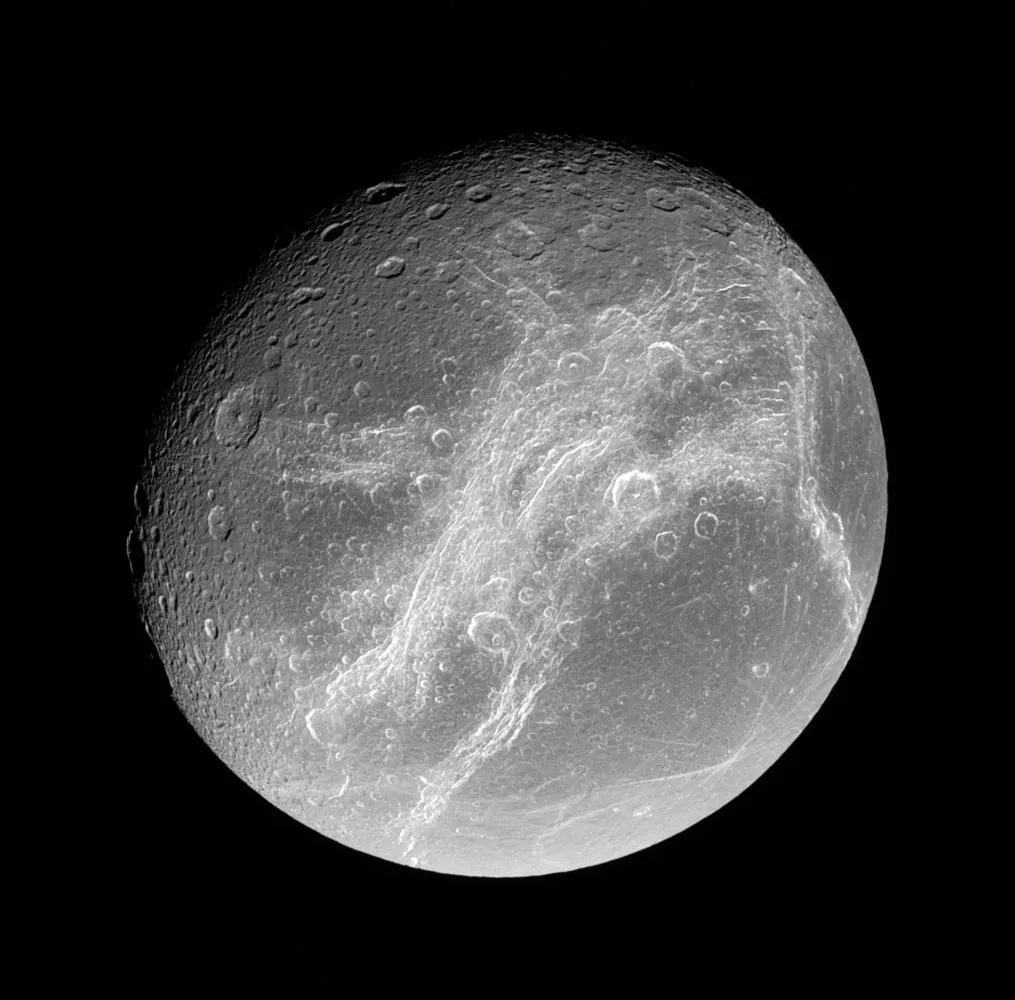Dione is one of the largest satellites of Saturn, exceeded in size only by Titan. It is an icy body with a diameter of 1120 kilometers, about a third that of Earth’s Moon. Dione orbits Saturn at a distance of 377,400 kilometers from the planet’s center, taking 2.7 days to complete one orbit. It has an average density of 1.43 grams per cubic centimeter and is composed mostly of water ice with some rock.
Dione was discovered by Giovanni Cassini in 1684 along with three other moons of Saturn: Tethys, Enceladus, and Rhea. These four satellites were subsequently named after the Titans of Greek mythology (Cassini had already discovered four other moons earlier which he named after Jupiter’s Galilean moons). Dione was originally considered to be a moon of Jupiter before being reassigned as a satellite of Saturn during the discovery process for the latter planet’s satellites in 1671-1672 by Christiaan Huygens.
The surface features on Dione are heavily cratered but also show signs of past geological activity in the form of grooves and rilles (grooves are linear depressions while rilles are sinuous). The most prominent feature on Dione is a large impact crater called Mimas Regio which covers about 10% of the satellite’s surface area (the crater itself is approximately 500 kilometers across). Other notable craters include Gersemia Rupes (a set of parallel scarps or cliffs), Janiculum Dorsum (a ridge), and Virgil Fossae (a series o fdeep fossae or trenches). There is also evidence for recent tectonic activity in the formof faults and fractures on Dione’s surface.
The interior structureof Dione consistsof an icy mantle surroundinga rocky core with amassof approximately1021 kilogramsand adiameterof970 kilometers . This compositionis similar to thatof manyothersatellitesin theSaturnsystem(particularlyEnceladusandTethys)and likely reflects accretionfromthe same primordialdiskaroundSaturnduringits formation . The high density impliesthatDionecontains alarge fractionofthe heavy elements(elements heavierthan hydrogenand helium)relativeto its overall mass , consistentwith an accretionary origin .


